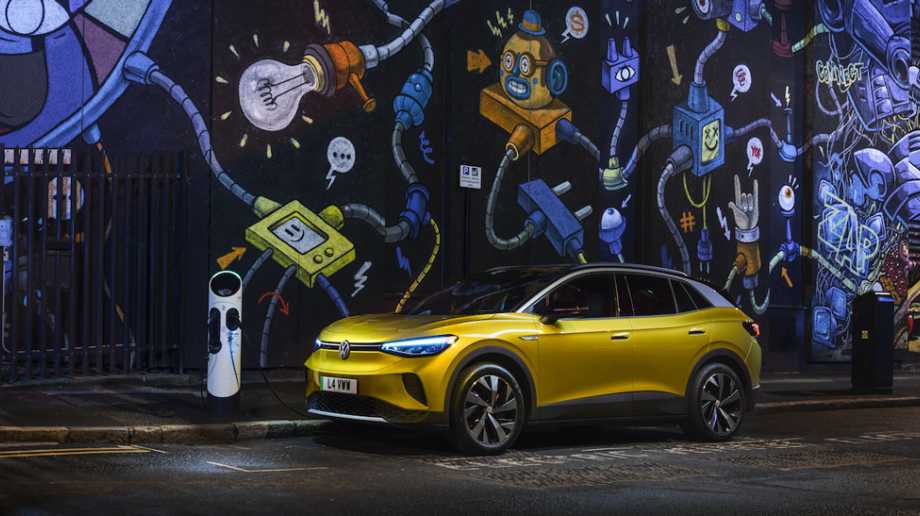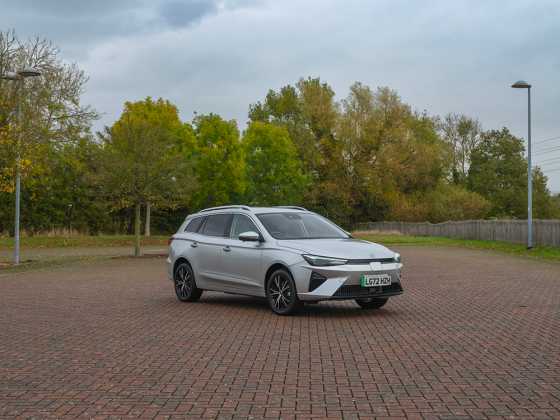First Drive: Volkswagen ID 4 Pro Performance 77kWh

The ID 4 is the first ‘global’ electric Volkswagen. Expected to play a starring role in VW’s new electric era, Richard Gooding finds it to be a car with spacious appeal
What is it?
Following the ID 3, the ID 4 is the second model in Volkswagen’s new all-electric offensive. A more family friendly SUV in shape and style, it brings the ID 3’s technology and MEB electric vehicle platform to a more practical car. Named ‘World Car of the Year’ in 2021, the ID 4 is a more ‘global’ car than the ID 3. Sold in the US and China, the car tested and illustrated here is the 77kWh ID 4 1st Edition. The model range has been restructured since we drove the car, and while the model itself is no longer available, its battery and 201bhp motor remain on sale.
What range does it have?
Volkswagen has given fleet drivers a choice of two batteries and four motors with the ID 4, if you exclude the sporty GTX, bundled under four powertrain packages. The 145bhp, 52kWh ‘Pure’ package has a range of up to 213 miles, which remains the same when fitted with the 167bhp ‘Pure Performance’ motor.
Up to 318 miles can be driven with the larger 77kWh battery in 171bhp ‘Pro’ guise, whereas the 201bhp ID 4 ‘Pro Performance’ (tested here) variant can travel up to 320 miles on a single charge. On top of the battery choices are five trim levels – Life, Style, Family, Max and GTX.
How long does it take to charge?
Charging at up to 125kW DC, the ID 4’s 77kWh battery takes just 38 minutes for an 80 per cent top-up at a fast charger. On a 7.2kW wallbox, a 100 per cent charge is complete in 12 hours, that time dropping to just under 8 hours on an 11kW connection.
How does it drive?
The ID 4 shares the ID 3’s ‘friendly’ face, with a slim ‘grille’ and large headlights. Its SUV style is obvious, but the rising waistline is graceful, and it looks especially good in its two-tone paint options.
Inside, there’ s the same 5.3-inch dash panel display with twist gear-selector as the ID 3, and an identical central 10-inch colour infotainment screen, with touch-sensitive buttons. Along with the haptic touch steering wheel buttons on the steering wheel they work well enough, but physical controls remain more positive. The ID 4 is well built, but like the ID 3, the famous VW quality seems to have dipped a little. More suited to families, there’s also lots of space; the tailgate reveals a 543-litre luggage area.
A more commanding driving position is immediately evident, and even though the ID 4 weighs around 300kg more than the ID 3, the Pro Performance 77kWh ID 4 still has strong pace from its 201bhp motor. With a 50:50 weight distribution and its battery mounted low in the body, the ID 4 handles well and is relatively agile for a car so large. There’s more road noise than in the ID 3, but the driving experience is comfortable, quiet and smooth. The separate ‘B’ gear gives increased regenerative braking.
What does it cost?
The ID 4 1st Edition at the time of testing cost £40,800 on-the-road. Now that model has been discontinued, the 77kWh ID 4 variants begin at £42,450 for the 201bhp ID 4 Life Pro Performance 77kWh. The most expensive ID 4 with the Pro Performance 77kWh battery pack is the £51,535 ID 4 Max.
How much does it cost to tax?
In common with EVs, the ID 4 is exempt from any VED charges in the first and subsequent registration years. One per cent Benefit in Kind (BIK) tax is charged for 2021-2022, rising to two per cent for 2021-2022 and 2022-2023.
Why does my fleet need one?
The ID 3 was the first pillar of Volkswagen’s new electric era, and the ID 4 builds on that solid foundation, offering a more practical and spacious shape. Although its family of powertrain packages can seem bewildering at first, there’s plenty of choice, with every version seemingly well-equipped, and also capable of a decent long electric range. A high level of technology showcases the new digital age it represents. Smart and safe, the ID 4 offers lots of appeal.









